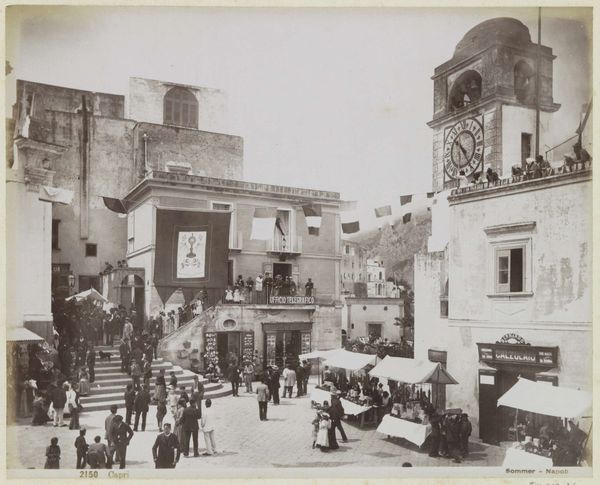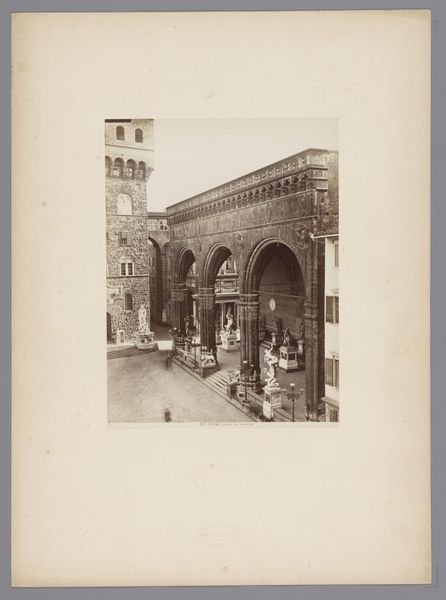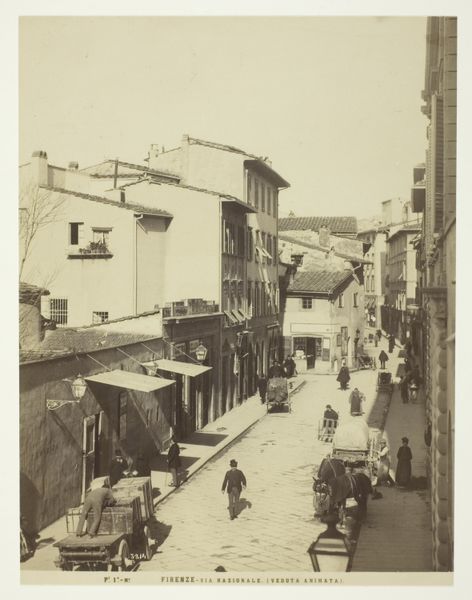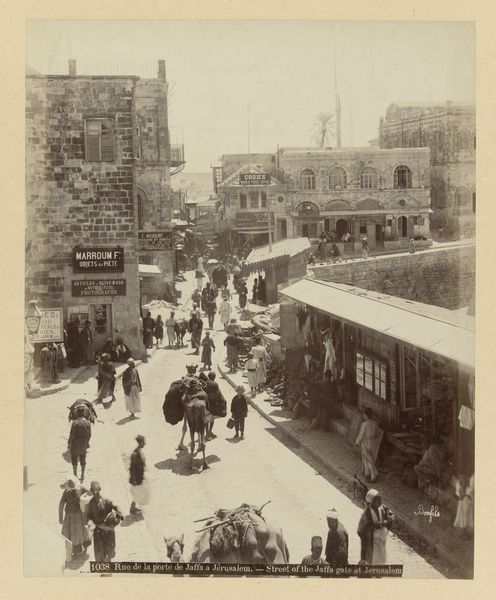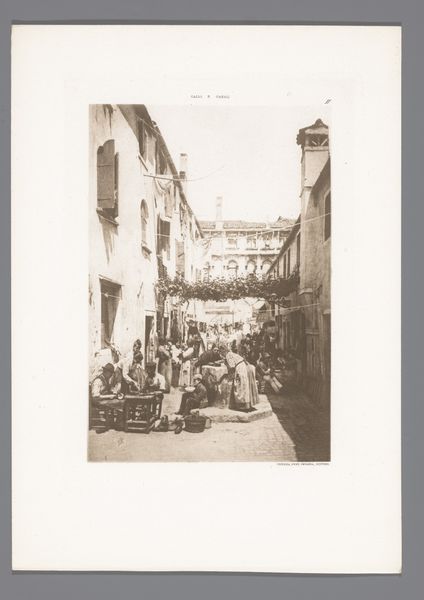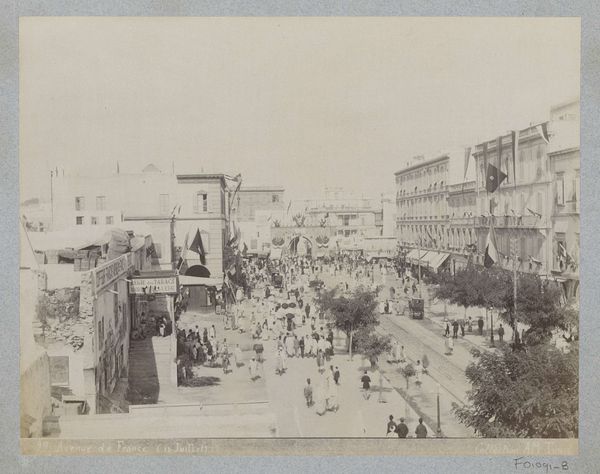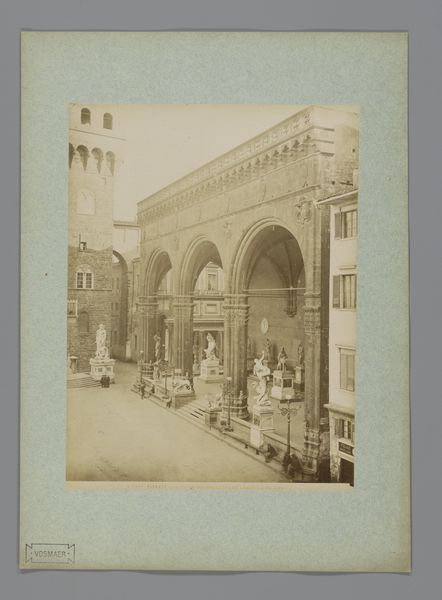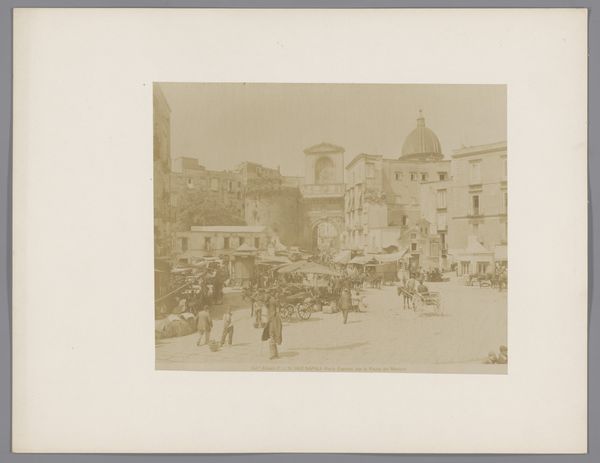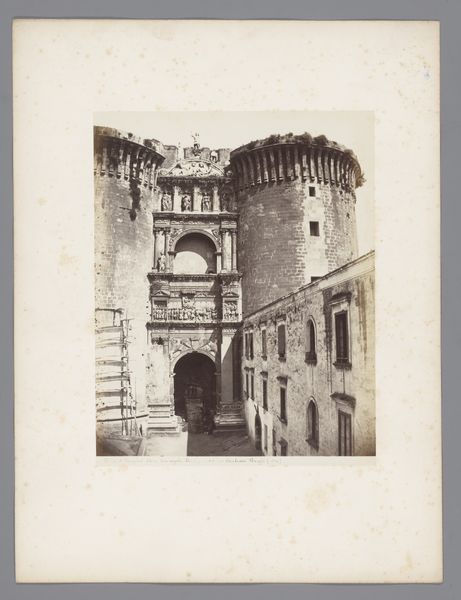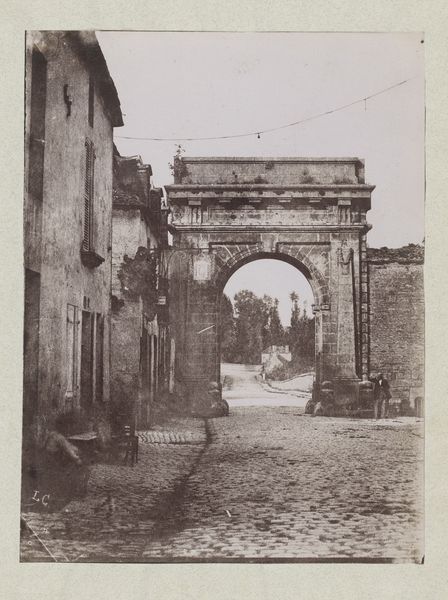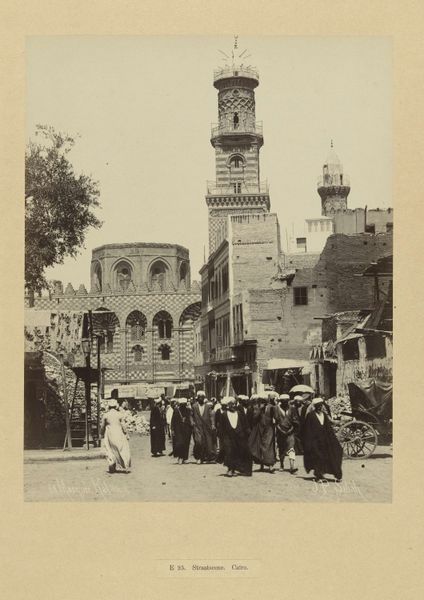
photography
#
street-photography
#
photography
#
cityscape
#
italian-renaissance
#
street
Dimensions: height 254 mm, width 195 mm, height 328 mm, width 241 mm
Copyright: Rijks Museum: Open Domain
Curator: Alright, next up we have “Porta Capuana te Napels” by Fratelli Alinari, likely taken sometime between 1880 and 1895. What’s catching your eye here? Editor: What a bustling scene! It almost feels voyeuristic, like stepping into someone else's memory. The tonal range creates such a deep, sepia-toned warmth that softens all the angular city elements; that architectural composition would otherwise feel rigid, right? Curator: Absolutely. Alinari was a master of capturing these everyday moments. It is particularly captivating due to the subject matter and perspective: the very street, so central to everyday life, teeming with citizens who also trade and consume there. Looking closely, one might imagine all the human transactions going on that are facilitated by the built environment in that part of Naples. Editor: I love how the heavy stone arch of the Porta Capuana dwarfs the figures in the street. You can tell by the garments that labor and access look very different, that some profit off it a bit more directly; yet each depends on this infrastructure as it serves that bustling street. There's an intense materiality implied too - that clothing, those building materials. Everything has a cost. Curator: Indeed. It's interesting to think about photography as a material object itself in this context. Alinari was operating a pretty significant commercial studio. I mean, the glass plate negatives, the chemicals, the darkroom processes, and then these prints distributed as historical documents or even souvenirs. Photography was also then increasingly linked to consumption and class-conscious commerce as its processes became ever more democratized! Editor: And that process certainly had value. Looking at the details of the street stalls, the patterns in the clothing... I bet rendering this scene took a huge amount of darkroom work to balance light and shadow and create all of those reproducible images! Curator: Well said. It invites us to meditate on not only the historical moment captured but on how we see and record our history, one photographic plate at a time. Editor: Exactly. Each photograph such as this one invites considerations of how material value shifts within the historical imagination... Thank you, Fratelli Alinari for making such thoughts available.
Comments
No comments
Be the first to comment and join the conversation on the ultimate creative platform.
